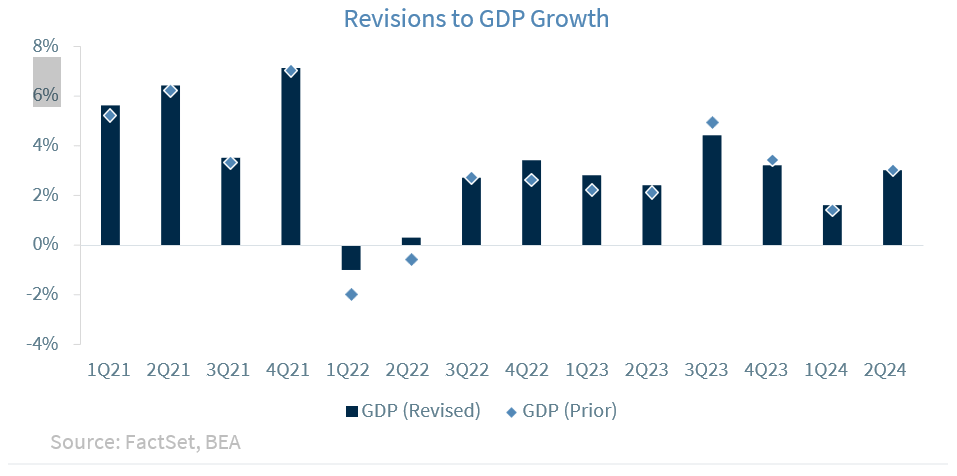by Eugenio Alemán, Chief Economist, Raymond James
Chief Economist Eugenio J. Alemán discusses current economic conditions.
After the first rate cut in two years went according to market expectations as the Federal Reserve (Fed) obliged and reduced the federal funds rate by 50 basis points (bps), markets have continued to run with the Fed’s ball and seem to have a ‘sugar rush,’ betting the Fed is going cut another 50 bps in November and another 25 bps in December for a total of 125 bps before the end of the year. However, the latest Fed dot plot, which was released just one week ago, only called for 100 bps of cuts before the end of the year. Thus, this must mean that markets are expecting economic conditions to deteriorate in the coming months and quarters even though the Fed made its latest changes in the dot plot assuming no change in economic conditions compared to what it had in the June Summary of Economic Projections (SEP).
As we said in last week’s Weekly Economics Thoughts of the Week, the Fed’s argument for its rate cut was that the inflation and labor situation was more in balance than before and that policy rates were too restrictive in this new environment. However, it is clear that markets are second guessing the Fed’s economic forecast and are pushing for more rate cuts. The only way this could happen is if the US economy deteriorates considerably during the last quarter of the year. Recent data is still showing a very strong US economy as consumer demand remains resilient. Furthermore, lower interest rates will probably give some new life to the housing market, helping keep shelter costs high.
We do expect some weakening in economic activity over the next several quarters but probably not enough to warrant the larger decrease in rates that markets are expecting, especially if shelter costs remain high. Thus, if Fed officials want to keep their rate cuts in line with last week’s dot plot, they will have to hit the speaking trail soon to convince markets that what they are expecting is not consistent with what the Fed is seeing in economic activity.
Revisions to GDP: Higher economic growth coming out of the pandemic
During the release of the third revision of the real gross domestic product for the second quarter of the year, the Bureau of Economic Analysis (BEA) revised, mostly upward, the growth rates for GDP in 2021, 2022, and 2023. The revisions were as follows: real GDP growth for 2021 was 6.1% versus an original increase of 5.8%; for 2022 it revised GDP growth from 1.9% originally to 2.5%; and for 2023, it revised GDP growth up from 2.5% to 2.9%.
Perhaps the most important upward revision during this period was related to the first two quarters of 2022, which the BEA had originally declining by 2.0% and 0.6%, respectively. At the time of these releases, there was a big discussion/controversy arguing that those two consecutive quarters of GDP growth should have been declared a technical recession. Now, the controversy is over, as the BEA has revised both quarters up, to a decline of 1.0% during the first quarter of 2022 and an increase of 0.3% during the second quarter of 2022.
Although many sectors of the economy were revised, the most consequential of the changes occurred to personal consumption expenditures (PCE) which, on average, was stronger than originally reported. Since PCE represents about 70% of the U.S. economy, the revisions to PCE pushed economic growth higher.
The bottom line is that consumer demand, and the economy, have continued to outpace even the most upbeat forecast as well as the official releases back to the start of the recovery from the pandemic recession.
Copyright © Raymond James
















